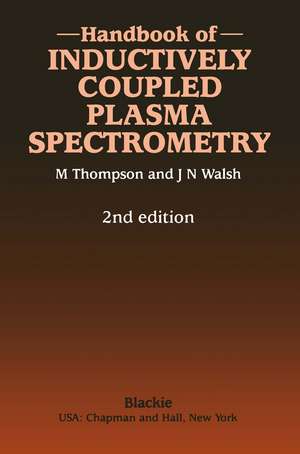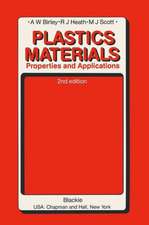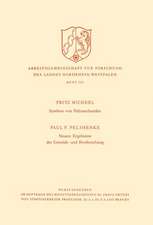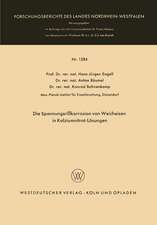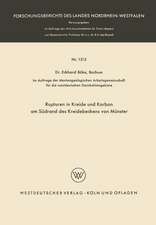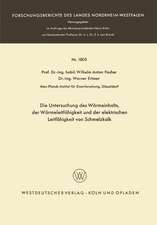Handbook of Inductively Coupled Plasma Spectrometry: Second Edition
Autor Michael Thompsonen Limba Engleză Paperback – 6 oct 2011
Preț: 390.25 lei
Nou
Puncte Express: 585
Preț estimativ în valută:
74.67€ • 78.17$ • 61.79£
74.67€ • 78.17$ • 61.79£
Carte tipărită la comandă
Livrare economică 05-19 aprilie
Preluare comenzi: 021 569.72.76
Specificații
ISBN-13: 9781461280378
ISBN-10: 1461280370
Pagini: 332
Ilustrații: XII, 316 p.
Dimensiuni: 155 x 235 x 17 mm
Greutate: 0.47 kg
Ediția:Softcover reprint of the original 1st ed. 1989
Editura: Springer Us
Colecția Springer
Locul publicării:New York, NY, United States
ISBN-10: 1461280370
Pagini: 332
Ilustrații: XII, 316 p.
Dimensiuni: 155 x 235 x 17 mm
Greutate: 0.47 kg
Ediția:Softcover reprint of the original 1st ed. 1989
Editura: Springer Us
Colecția Springer
Locul publicării:New York, NY, United States
Public țintă
ResearchCuprins
1 Introduction.- 1.1 Preliminary-purpose and scope of book.- 1.2 Historic development of ICP spectrometry.- 1.3 Background to quantitative ICP analysis.- 1.4 Range of determinable elements in geological materials.- 2 Analytical characteristics.- 2.1 Introduction.- 2.2 Simultaneous analysis.- 2.3 Sequential analysis ICP system.- 2.4 Detection limits.- 2.5 Calibration range of ICP—AES.- 2.6 Interferences.- 2.7 Precision and accuracy.- 2.8 Experimental considerations.- 2.9 The injection of organic liquids into an ICP.- 3 Instrumentation for ICP—AES.- 3.1 Introduction.- 3.2 Spectrometers.- 3.3 Plasma torches.- 3.4 Nebulizer systems.- 3.5 Radiofrequency generators and source.- 3.6 Electronics, computers and software.- 3.7 Fourier transform spectrometers.- 3.8 ICP-atomic fluorescence spectrometry.- 3.9 Direct current plasmas (DCP).- 3.10 Microwave plasmas (MIP).- 3.11 Choice of an ICP system.- 4 Silicate rock analysis.- 4.1 Dissolution methods for silicates.- 4.2 Instrument calibration.- 4.3 Major element determinations.- 4.3 Trace element analysis.- 4.4 Rare earth element determinations.- 5 Multielement applications of ICPS in applied geochemistry.- 5.1 The nature and evolution of applied geochemistry.- 5.2 General aspects of applied geochemical analysis.- 5.3 ICP instrumentation in relation to the requirements of applied geochemistry.- 5.4 Decomposition procedures in applied geochemical analysis.- 6 Gas phase sample injection.- 6.1 The development of gas phase injection methods.- 6.2 Methodology of the hydride injection system.- 6.3 Applications of the hydride injection system.- 7 Injection methods for solid samples.- 7.1 Introduction to solid sample injection methods.- 7.2 Sample injection following electrothermal vaporization.- 7.3 Direct sample injection from agraphite rod.- 7.4 Discrete sample injection by means of laser ablation.- 7.5 Nebulization of slurries.- 8 Water analysis by ICP—AES.- 8.1 Introduction.- 8.2 General aspects of water analysis.- 8.3 Direct water analysis by ICP—AES.- 8.4 Water analysis with preconcentration.- 9 The analysis of environmental materials by ICP—AES.- 9.1 Introduction.- 9.2 Air analysis.- 9.3 Sewage sludge.- 9.4 Domestic dust, road dust and industrial dust.- 9.5 Domestic and industrial refuse.- 9.6 The analysis of animal and plant tissues.- 10 The analysis of archaeological materials by ICP—AES.- 10.1 Introduction.- 10.2 Archaeological materials.- 11 Inductively coupled plasma mass spectrometry.- 11.1 Instrumentation.- 11.2 Optimization.- 11.3 Interferences.- 11.4 Calibration strategies.- 11.5 Applications of ICP-MS with sample introduction by nebulization.- 11.6 Other modes of sample introduction.- 11.7 Future directions.- 12 Analysis of metals by ICP—AES.- 12.1 Introduction.- 12.2 Analysis of iron and steel.- 12.3 Analysis of other metals.- Appendix 1 Safety.- Appendix 2 Manufacturers of ICP systems and accessories.- References.
